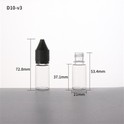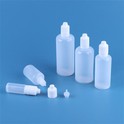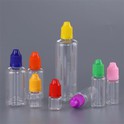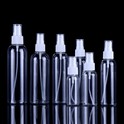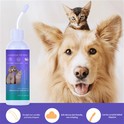What is the TPD?
The TPD landed on May 20, 2016 and drastically changed the vaping landscape in the EU. A new term entered vaping vocabulary, as everybody had to make sure that their vapes were “TPD compliant.” But what is the TPD?
The Tobacco Products Directive is a “directive of the European Union which places limits on the sale and merchandising of tobacco and tobacco related products in the EU.” The TPD was originally created in 2001, but was revised in 2014 to include e-cigarettes.
After passage, each EU member state had to transpose the requirements of the TPD into their own laws by May 20, 2016. After that, most countries allowed retailers a one-year period to sell through their non-TPD compliant stock.
With every EU country essentially having its own interpretation of the TPD, understanding all of the regulations is pretty complicated. But there are a number of regulations that pertain to vape tanks and e-liquid which apply in all EU countries and are relevant to all vapers. And as is the case with most rushed regulations, there are loopholes that make things easier for both businesses and customers.
Want to find out if your vape tanks and e-liquid are TPD compliant? Then keep reading.
TPD compliant vape tanks
The TPD stipulates that:
The maximum capacity for a “disposable electronic cigarette, a single use cartridge, or a tank” should not exceed 2 mL
Vape tanks should come with nicotine warning stickers
If you’re a fan of multi-mesh sub ohm tanks, the 2 mL capacity rule probably means carrying a refill bottle when you leave home. While this regulation is not enforced heavily in some EU countries, in others finding a tank with larger capacity in a vape shop is impossible.
Loopholes
Some companies are coming out with spare kits that add capacity to their tanks. These are usually separate purchases, since including these kits in the original packaging would defeat the purpose of the rule. Regulating a package that includes a chimney part and a spare glass is close to impossible, so here’s your solution for that.
Other companies tried an even simpler solution. By simply adding a silicon gasket inside a tank they were able to reduce its capacity to 2 mL. The user can easily remove the silicon piece and regain the lost milliliters in a matter of seconds. That’s an easily recognizable “hack”, which is probably the reason we don’t see it implemented often anymore.
Another workaround to the capacity regulation is simply ordering from abroad. Opening every single vape mail package that comes to the EU from China, and checking the capacity of every single tank, is not something that’s likely to ever happen. But bear in mind that some EU countries have banned cross-border purchases altogether. Check the laws of your country if you don’t want last minute surprises.
Although not a loophole, it’s good to know that RDAs are not subject to the 2 mL limit. But if you are planning on using your RDA with a squonk mod, bear in mind that squonk bottles may be regulated at some point, and it is already being discussed in the U.K.
TPD compliant e-liquid
E-liquid manufacturers need to follow these rules in order for their products to be TPD compliant:
Bottle capacity must not exceed 10 mL
Nicotine strength must not exceed 20 mg/mL
Bottles must have childproof caps and nozzles that limit liquid flow
Bottles must have nicotine warning stickers
E-liquid boxes must include warning and informational leaflets
The first two rules are the ones that are most relevant to customers, as they limit all e-liquid to 10 mL bottles and 20 mg/mL nicotine strength.

